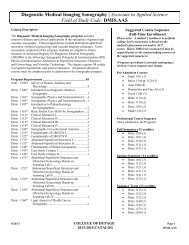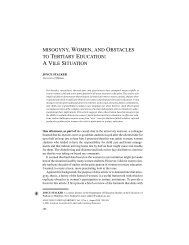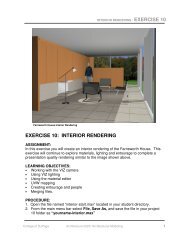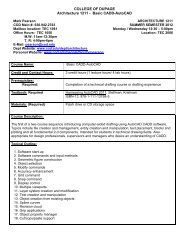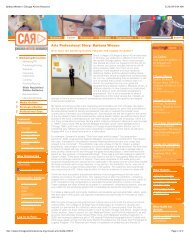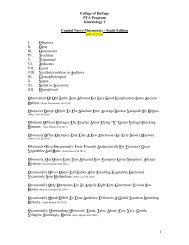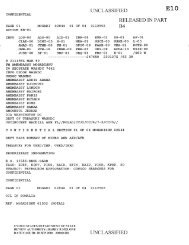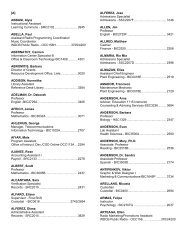pre-lab preparation sheet for lab 4—batteries, bulbs, and current
pre-lab preparation sheet for lab 4—batteries, bulbs, and current
pre-lab preparation sheet for lab 4—batteries, bulbs, and current
Create successful ePaper yourself
Turn your PDF publications into a flip-book with our unique Google optimized e-Paper software.
Question 2-7: When you added the second bulb to the circuit did the voltage across the<br />
battery change significantly (i.e., by more than a few percent)?<br />
Question 2-8: Does the battery appear to be a source of constant <strong>current</strong>, constant<br />
voltage, or neither when different elements are added to a circuit?<br />
INVESTIGATION 3: AN ANALOGY TO<br />
CURRENTAND RESISTANCE<br />
You found in Activity 1-5 that <strong>current</strong> is not used up in flowing through a bulb, but this<br />
may seem counterintuitive to you. Also, how can we explain that there is less <strong>current</strong> in<br />
the circuit with two <strong>bulbs</strong> instead of one? Lots of physics teachers have invented<br />
analogies to help explain these electric circuit concepts. One approach is to construct a<br />
model of a gravitational system that is in some ways analogous to the electrical system<br />
you are studying. This is shown in Figure 4-5.<br />
It is believed that the electrons flowing through a conductor have frequent collisions<br />
that slow them down <strong>and</strong> change their directions. Between collisions each electron<br />
accelerates <strong>and</strong> finally staggers through the material with an average drift velocity,<br />
drift<br />
.<br />
Figure 4-15: A simplified depiction of an electron in a uni<strong>for</strong>m electric field staggering through a conductor<br />
as a result of collisions. Despite the constant <strong>for</strong>ce to the right caused by the electric field, these collisions<br />
cause the electron to move through the conductor with a constant average velocity,<br />
velocity‖ (instead of accelerating).<br />
drift<br />
, the ―drift<br />
As you saw in Investigation 2, we can talk about the resistance to flow of electrons<br />
that materials offer. A wire has a low resistance. A light bulb has a much higher<br />
resistance. Special electric elements that resist <strong>current</strong> are called resistors. You will<br />
examine the behavior of these in electric circuits in future <strong>lab</strong>s.<br />
Lab 04 – Batteries <strong>and</strong> Current



